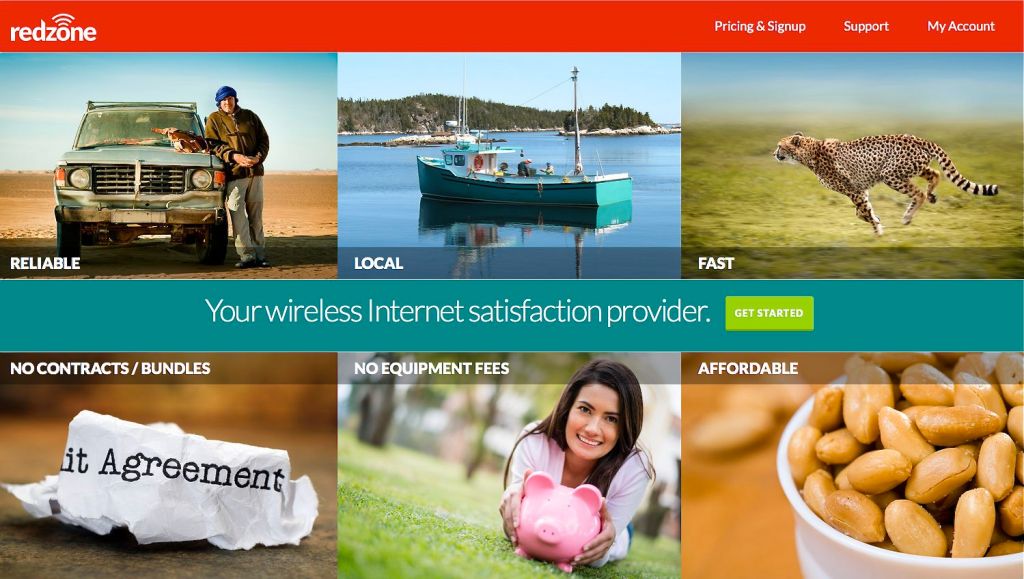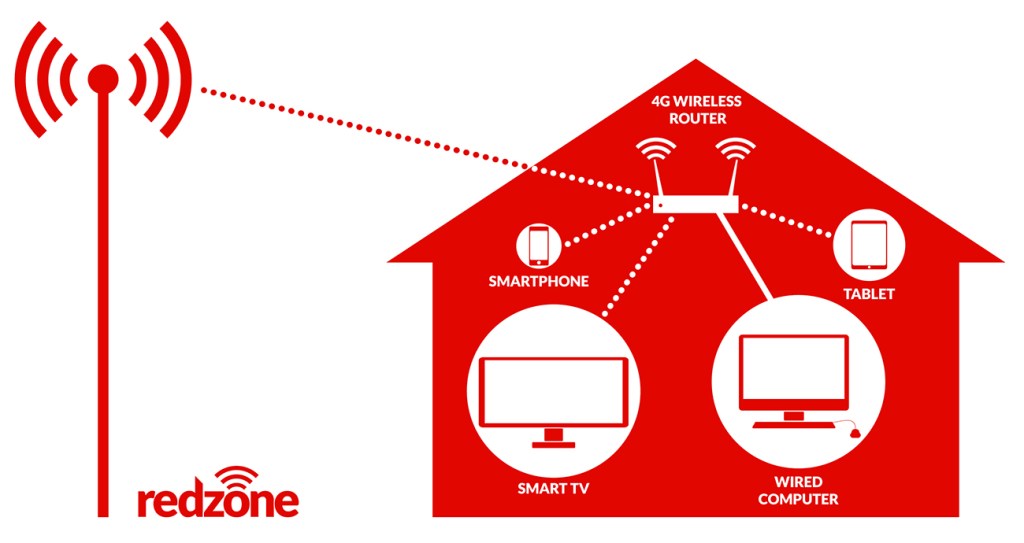Redzone Wireless pledges fast, low-cost broadband access using technology of the next generation.
A Maine telecommunications startup will soon offer high-speed Internet service in Portland using wireless technology that’s currently used in only two other areas of the country, an advantage it intends to use against much bigger existing competitors.
Redzone Wireless LLC, based in Camden, has installed equipment on the roof of One City Center on Portland’s Monument Square that will be able to provide high-speed, wireless Internet access to Portland residents and businesses. Think of the service as a community-sized Wifi network, but one you have to pay to access.
While the company is launching its initial service in Portland, Redzone plans to expand its wireless broadband network throughout the state. Within the next year, it intends to offer service to 25 percent of the state’s population, and eventually expand it to roughly 90 percent of the state. The benefits of wireless technology to provide high-speed Internet service is that the cost of deploying the technology is minuscule compared with the cost of laying fiber-optic cable to every home and business.
For a state that ranks among the slowest average Internet speeds in the country, Redzone’s plan has major implications for Maine’s future, according to Redzone CEO Jim McKenna.
“We believe we can make Maine one of the fastest states in the nation,” McKenna said Monday.
The state of Maine is backing Redzone’s ambitious mission. On Thursday, the Finance Authority of Maine’s board agreed to insure a $4 million loan from Camden National Bank that Redzone will use to purchase equipment and fund ongoing operations while it scales up. It also expects to create about 18 jobs in the coming months. The loan insurance, provided through FAME’s commercial loan insurance program, means the state will be liable for paying back 90 percent of the loan if Redzone fails.
Not that McKenna expects that to happen.
Redzone plans to leverage next-generation 4G LTE Advanced technology to deliver wireless high-speed Internet service by installing its equipment on existing cell towers across the state. A recent agreement with the University of Maine, which holds a federal license for a portion of wireless spectrum, means Redzone can deliver fast, reliable broadband service without the prohibitive cost of laying fiber-optic cable.
Currently, there are only two commercial deployments of 4G LTE Advanced networks in North America, and only 54 across the globe, according to Vicki Livingston, a spokeswoman for 4G Americas, a trade group that represents telecom companies that deploy 4G LTE technology.
“So this company is definitely on the cutting edge,” Livingston said of Redzone Wireless.
Although rate plans are still in flux, McKenna estimates that Redzone’s plans will range from $39 to $89 a month and will not include any required bundling of other services like cable or telephone, as many incumbent companies do. The company said download speeds will vary depending on tower locations and other variables, but the 4G LTE Advanced technology has been shown to deliver download speeds of up to 100 megabits per second, far exceeding the state’s 10-megabit-per-second definition of high-speed broadband. Redzone will also provide customers with free equipment to install in their homes, which will set it apart from companies like Time Warner Cable that require customers to lease equipment.
Redzone’s plan puts it squarely in competition with existing telecommunications behemoths like FairPoint Communications and Time Warner Cable, which currently provide Internet service to the majority of Maine residents.
McKenna sees that as an opportunity.
While these legacy companies have expansive infrastructures with costly upkeep, Redzone’s advantage is born from technology without that overhead.
McKenna estimates it would cost $2 billion to lay fiber to every Maine home and business, but he claims Redzone will be able to provide similar service using 4G LTE Advanced wireless technology for just a small fraction of that.
As an example, for $100,000 Redzone could install equipment on a cell tower in a rural community that provides high-speed Internet access to all homes and businesses within that community.
“That same $100,000 investment gets you about a mile of fiber and doesn’t connect to a single home or business,” McKenna said. “It’s not that fiber isn’t a great technology. It’s just not practical.”
4G LTE Advanced technology has the capability to aggregate multiple channels together to provide a wider pipe to consumers, McKenna said.
“What does this mean? It means greater penetration through trees and buildings. It translates to greater distances, so more coverage area, and it translates to significantly faster speeds,” he said.
McKenna said the company this year is installing its equipment on 15 existing towers, or in the case of Portland, on the roof of a tall office building. Where existing towers are used, Redzone would pay the tower owner a lease fee.
McKenna, an electrical engineer and former U.S. Navy officer who served on nuclear submarines, founded the original Redzone Wireless in 2007. Based in Rockland at the time, the company provided wireless Internet service to the midcoast area and other rural areas. It received a $346,370 grant from the ConnectME Authority in 2008 to offer similar service in Bar Harbor and other towns in Hancock County. In 2014, it also received a $44,000 grant to offer wireless broadband service on Great Diamond Island.
However, that first iteration of Redzone Wireless offered wireless broadband service to homes and businesses using non-licensed spectrum, the low-power spectrum used by garage-door openers, which is limited by distance and obstacles between the receiver and the source of the radio signal. Those limitations meant Redzone was able to offer service to only about 20 of every 100 potential customers who inquired about it. As of last year, it had 5,000 people on a waiting list who weren’t yet in the company’s limited range.
“It was very discouraging,” McKenna said.
However, McKenna sold the company in August 2014 to a group of Maine investors and reformed it, retaining the name and brand with McKenna at the helm. His investors share McKenna’s desire to bring Maine up out of the basement of Internet speeds. ConnectME Authority, the agency that supports the expansion of Maine’s broadband access, adopted a new standard of 10 Mbps up and 10 Mbps down as the minimum speeds needed to meet the definition of “high-speed” access. Currently, only about 20 percent of Maine households have access to broadband speeds that fast, according to Phil Lindley, ConnectME Authority’s director.
Maine has ranked close to the bottom on lists of broadband speeds by state, including a report based on Ookla NetMetrics data that said Maine ranks 49th out of the 50 states and a recent report from Akamai Technologies that puts Maine at 48th among U.S. states and far behind countries like Estonia and Macao.
Send questions/comments to the editors.





Success. Please wait for the page to reload. If the page does not reload within 5 seconds, please refresh the page.
Enter your email and password to access comments.
Hi, to comment on stories you must . This profile is in addition to your subscription and website login.
Already have a commenting profile? .
Invalid username/password.
Please check your email to confirm and complete your registration.
Only subscribers are eligible to post comments. Please subscribe or login first for digital access. Here’s why.
Use the form below to reset your password. When you've submitted your account email, we will send an email with a reset code.